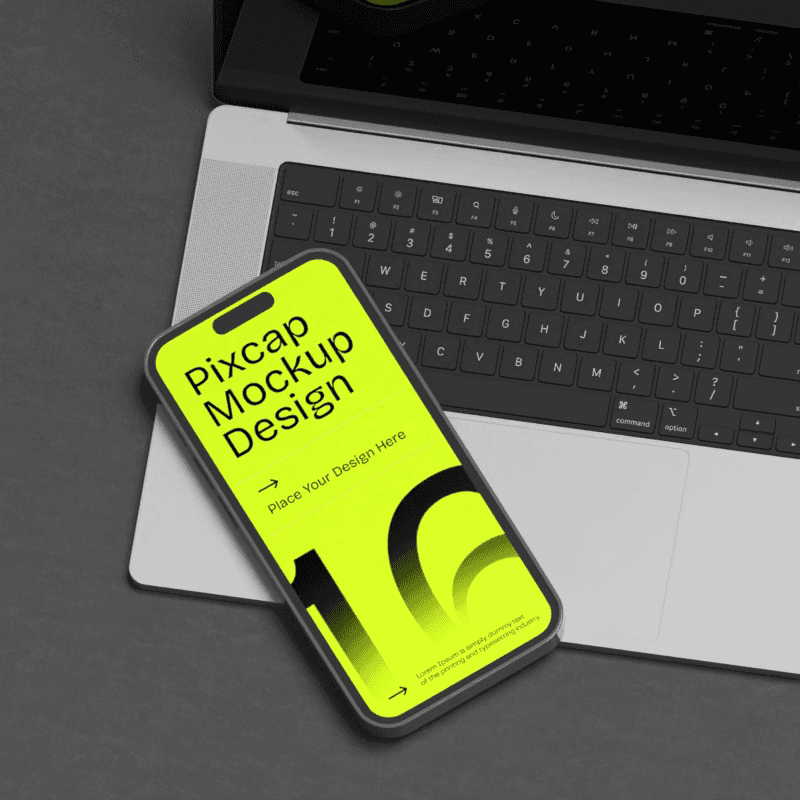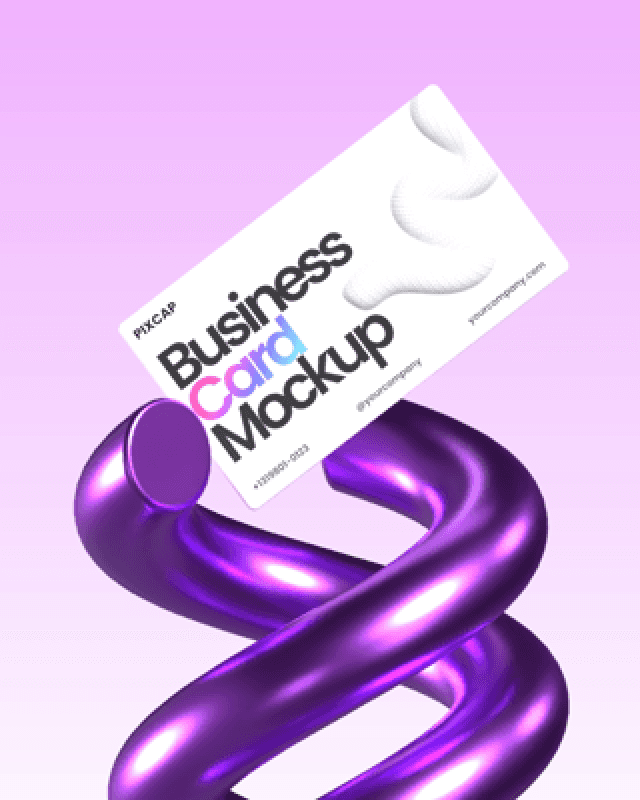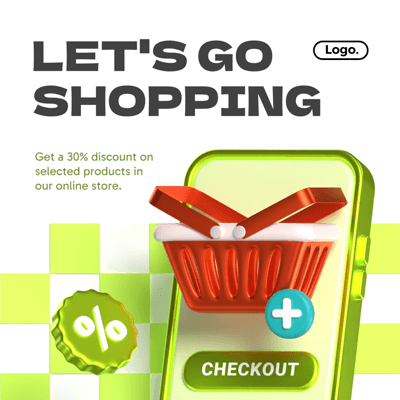In our daily lives, we're always around objects that look like different shapes, from simple circles and squares to more complex forms. What's cool is that these unique geometric shapes can make us feel specific emotions.
This concept is useful when you're graphic designs. You can choose certain shapes to create specific tones and messages within your graphic design.
This article will explore how geometric shapes in design can really speak to our emotions, showing how everything around us connects to basic shapes, explaining what these shapes mean, and sharing tips on how to use this knowledge to make geometric design in your visual marketing even better.
What Are Geometric Shapes?
Geometric shapes are the basics of creating any kind of design. At their core, geometric shapes are structured, comprised of straight lines and curves, and include the circle, square, rectangle, triangle shape and more complex forms such as hexagons, octagons, and polygons. These shapes serve as the foundation for more complicated designs, allowing for an array of patterns and motifs.
Each shape carries its own psychological impact and can evoke different feelings. For example, circles are often associated with harmony and protection, making them ideal for brands wanting to convey a sense of community and inclusivity. Squares and rectangles suggest stability and trust, commonly used in professional and corporate designs. Triangles can imply motion, direction, or even conflict, depending on their orientation.

3 Types of Shapes in Design
In design, shapes are grouped into three main types: geometric (circles and squares), natural (shapes that take inspiration from nature unlike geometric shapes), and abstract (shapes that don't look like anything specific).
Each type of shape gives off a different vibe and can say something special about the brand or company that uses them.
Now we'll talk about what each category means and what different shapes in each group represent.
Geometric Shapes
Geometric shapes are the most basic and structured forms in design. They are typically used to create a sense of order and symmetry in a design. These shapes are created using mathematical equations and have a strong emphasis on lines, angles, and curves. They can be simple or complex, but they always convey a sense of precision and balance.
Here are some common geometric shapes and their meanings:
Circles: These round shapes symbolize unity, wholeness, and protection. They are often used in logos to represent community or inclusivity.
Squares and rectangles: These shapes represent stability, trust, and professionalism. They are commonly used in corporate designs to convey reliability and structure.
Triangles: Triangles can imply motion, direction, or even conflict depending on their orientation. In design, they are often used to create a sense of movement or energy. Pointed upward, they represent ambition and growth, while pointing downward can symbolize stability and grounding.
Hexagons: These shapes are often associated with intelligence, communication, and organization. They are frequently used in technology or education-related designs.
Diamonds: Diamonds symbolize luxury, strength, and value. They are commonly used in high-end brands to convey exclusivity and sophistication.
You can learn more about types of logos here.
Natural Shapes
Natural shapes are derived from nature and often have organic, irregular forms. They can add a sense of warmth and humanity to a design and are commonly used in branding for businesses with an environmentally friendly or natural focus.
Some examples of natural shapes include:
Clouds: These shapes convey freedom, calmness, and tranquility. They are commonly used in designs for wellness or travel-related businesses.
Waves: Similar to clouds, waves represent movement and fluidity. They can also symbolize change and adaptation.
Leaves: These shapes are often used in designs related to health, wellness, and sustainability. They can convey growth, vitality, and harmony with nature.
Mountains: Mountains evoke a sense of strength, stability, and grandeur. They are commonly used in designs for outdoor and adventure-related businesses.
Abstract Shapes
Abstract shapes turn complicated things into simple, easy-to-recognize icons. They grab the main idea of something and make it into abstract shape of a symbol that's easy to spot.
For example, a simple picture of a house can stand for home or real estate, and a basic leaf shape can represent nature or efforts to be more eco-friendly.
These shapes are great for making the jump from really detailed pictures to something quick and universally understood, which is what modern design tries to do.
The Role of Graphic Shapes in Design
Graphic shapes not only add visual interest and appeal to designs, but they also serve an important role in communicating a brand's message and values. They can convey emotions, ideas, and concepts without the use of words.
Shapes are powerful tools that designers use to create balance, hierarchy, and flow within a design. They help guide the viewer's eye and create a sense of unity and cohesion in the overall composition.
Additionally, cool geometric shapes can also become part of a brand's identity. Just think about well-known logos such as Nike's swoosh or Apple's bitten apple. These simple shapes have become instantly recognizable symbols for their respective brands.
Choosing the Right Shapes for Your Design
When incorporating shapes into a design, it's important to consider their symbolic meanings and how they align with the message and values of your brand. For example, if you run a health and wellness business, using organic shapes and flowing shapes may better convey your message of balance and harmony.
Color also plays a significant role in shaping the perception of a shape. Brightly colored shapes can convey energy and excitement, while muted tones can evoke a sense of calmness and serenity. It's important to choose suitable colors that align with your brand's identity and the message you want to convey.
Modern Design Trends in Shape Usage
In recent years, there has been a shift towards using more abstract and geometric shapes in design. These shapes not only add a contemporary and modern touch, but they also allow for more creativity and flexibility in design.
Another trend is the use of negative space within shapes, creating dual meanings and adding depth to designs. This technique can be seen in popular logos such as FedEx with its hidden arrow between the "E" and "X" or the Tour de France logo with its hidden cyclist within the "O."
How to Use Geometric Shapes in Design Creatively
Web Design
In web design, using geometric shapes isn't just about making things look cool. It's about organizing information so that it's easy for people to use and understand.
Imagine you land on a website with a big, bold circle in the middle. That circle could be a button that takes you exactly where you need to go, like checking out the latest sale items or signing up for a newsletter.
Squares and rectangles? They're awesome for breaking up text and pictures so your eyes know where to look first. Plus, when graphic designers play with shapes like triangles pointing this way or that, they guide your gaze around the screen, making sure you don't miss the important thing. Applying shapes effectively in web design is like having a map that tells you where to go next, but way more fun because it's all in the design.

Branding
Shapes also play a crucial role in branding design. They can be used to create an identity and evoke certain emotions or associations with a brand.
For example, circles are often associated with unity and wholeness, making them a popular choice for companies that want to convey a sense of community or inclusivity. On the other hand, triangles are often seen as powerful and stable, making them a good fit for companies in the finance or technology industries.
Brands can also use shapes to create visual continuity across all of their marketing materials. By using visual language and using consistent shapes throughout their logo, website, packaging, and advertisements, they can establish a strong brand presence and make it easier for customers to recognize and remember their brand.
Print Design
Geometric shapes are not just limited to web design, they also play a significant role in print design. From business cards and brochures to magazine layouts and packaging, geometric shapes can add visual interest and organization to any printed material.
In print design, the use of shapes is often combined with other elements like typography, color, and images to create visually appealing and effective designs. They can be used to create emphasis, guide the reader's eye, or simply add a touch of creativity to an otherwise boring layout.
Calendar Design
When it comes to designing calendars, shapes are an essential element. They create forms that can be used to create a clear and organized layout, making it easier for users to read and navigate through the dates.
For example, using squares or rectangles for each day of the week can help create a clean and structured design. On the other hand, using circular shapes for each month can add a playful and creative touch to the calendar.
Shapes can also be used to represent different events or holidays, making it easier for users to remember important dates. For instance, a heart shape can be used for Valentine's Day or a star shape for Christmas.
The Use of Geometric Shapes in Logo Design
Geometric shapes have been a popular choice in logo design for many years. They are visually appealing, versatile, and can convey different meanings depending on their geometric shape used.
Circle Logos
Circles are often chosen for logos because they look softer and more peaceful. They symbolize togetherness, loyalty, and stability. Brands love to use circles because they're easy to recognize and suggest a sense of endless harmony. Some examples of famous brands with circular logos include Starbucks, Target, and Mastercard.
Triangle Logos
Triangles are known for their strong and stable structure. They also represent balance, progression, and stability. Brands that want to convey a modern and dynamic image often choose triangular logos. Examples of companies with triangle logos include Adidas, Delta Airlines, and Mitsubishi Motors.
Square Logos
Squares are a common choice for companies that want to convey stability, balance, and trust. They represent structure and organization, making them ideal for businesses in the financial or real estate industry. Some popular square logos include Microsoft, FedEx, and Visa.
Conclusion
Shapes in design are more powerful than you might think. They can express different feelings and emotions just by their looks. The trick is to understand which shapes can help you convey what you want.
Everything around us includes shapes and can be broken down into simpler forms. Once you get the basics down, you'll be able to create amazing things. It's time to try it out now! Use your imagination and make something awesome with these shapes.














